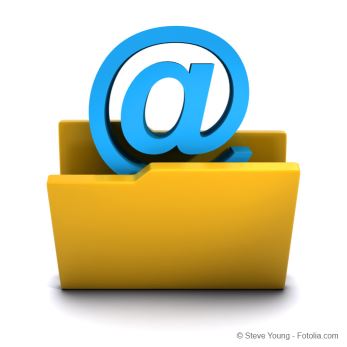Archiving e-mails – how to do it right
E-mail has long since supplanted other forms of communication, including letters and faxes, not only for personal but business correspondence as well. The advantages are obvious: a vastly simplified and accelerated flow of communications. It only takes a split second to reach and provide information to individuals and large groups of recipients anywhere in the world. In light of the fact that more and more business-relevant information is being shared by e-mail, many companies have an urgent need to organize and properly archive their e-mail correspondence. After all, contracts, offers and similar documents must be retained in accordance with statutory and regulatory requirements. The conventional form of paper documentation is not a viable alternative, since printing e-mails and file attachments and then storing them by hand would consume an enormous amount of time.
A good read: BITCOM guidelines on e-mail archiving
How exactly can I implement a smart system of e-mail archiving? BITKOM, the Federal Association for Information Technology, Telecommunications and New Media, has published some valuable guidelines that not only address relevant aspects of e-mail archiving, but also give the answers to a number of frequently asked questions. These guidelines cover a wide range of topics including legal considerations and compliance, optimizing storage costs, and archiving files in a manner that maintains their original integrity and authenticity. The bottom line: “Careful thought must be given to the ramifications and consequences when planning the implementation of an e-mail archiving system, and your focus may need to be shifted as necessary. E-mail archiving is not the kind of application you can install with a simple double-click of the mouse.”
PDF/A is the preferred file format and an important foundation for digital archiving. webPDF lets you easily convert electronic documents to PDF/A format. What’s more, webPDF can be used or installed as a gateway to long-term archiving, especially since it gives you the option of validating whether any PDF document meets the PDF/A standard. This remarkable tool can play a key role in ensuring your archiving maintains a recognized level of audit compliance.

